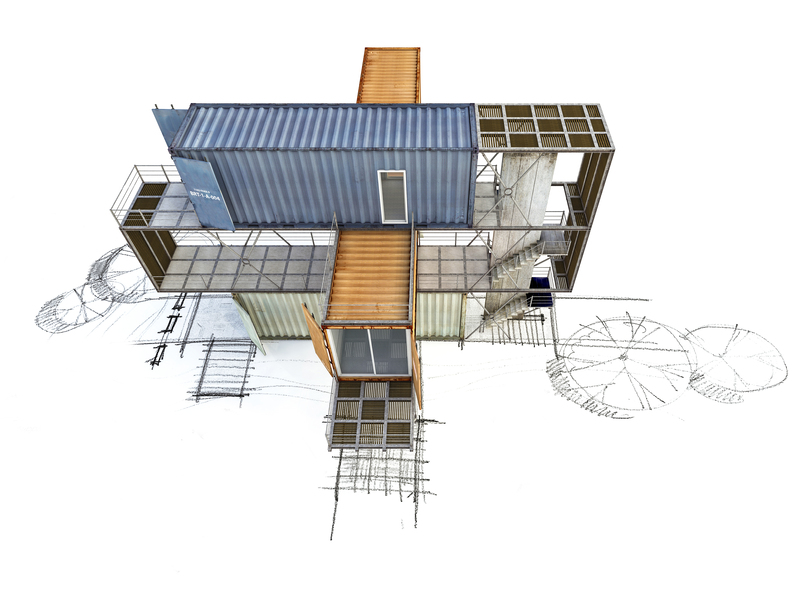Upcycle Revolution: Transforming Trash into One-of-a-Kind Treasures
Upcycling is much more than just a trend--it's a vital movement sweeping across the world, inspiring creative minds and eco-conscious individuals to rethink waste from a new perspective. With a surge in environmental awareness and a growing demand for sustainable living solutions, the upcycle revolution is radically transforming how we see, handle, and use discarded everyday objects.
In this comprehensive guide, we delve into the fascinating world of upcycling: turning trash into treasures, its benefits, popular techniques, inspiring project ideas, and how you can join this movement to make a positive impact. Whether you're a DIY enthusiast, a design lover, or an eco-warrior, read on to discover why upcycling is the creative answer to our mounting waste crisis.
What is Upcycling?
Upcycling, also known as creative reuse, refers to the process of converting unwanted or discarded materials into new products of better quality or for better environmental value. Unlike recycling, which usually breaks down materials in industrial processes, upcycling preserves the original form while giving it a new function or aesthetic appeal.
- Upcycled art: Old car parts transformed into sculptures
- Upcycled furniture: Pallets turned into chic coffee tables
- Upcycled fashion: Vintage fabrics reimagined as trendy clothing
The core philosophy is simple: See value where others see waste. This not only reduces landfill, but also encourages ingenuity and resourcefulness.
Upcycling vs Recycling: What's the Difference?
While both concepts aim to minimize waste, upcycling is distinct in its approach:
- Recycling typically breaks down materials to make raw materials for new products, often using significant energy and chemicals.
- Upcycling retains much of the item's original form but reinvents it, requiring less energy and fewer resources.
For example, recycling a glass bottle returns it to sand and then makes new glass, while upcycling might turn that same bottle into a lamp or a vase--giving it a new purpose with a unique, creative twist.

Why the Upcycle Revolution Matters
The world produces more than 2 billion tons of solid waste every year, with vast quantities ending up in landfills or polluting our oceans. The upcycle revolution is a powerful antidote to these alarming trends, offering tangible environmental, economic, and creative benefits:
Environmental Benefits of Upcycling
- Reduces landfill waste: Every upcycled item represents one less object choking our landfills.
- Conserves resources: By reusing existing materials, upcycling reduces the need for new raw materials, preserving forests, minerals, and water.
- Decreases pollution: Less incineration and waste means lower air, water, and soil pollution.
- Promotes biodiversity: Healthier ecosystems thrive as fewer hazardous materials leach into nature.
Economic and Social Impact
- Cost savings: Upcycling often uses free or cheap materials, making it budget-friendly for households and businesses.
- Job creation: The upcycle revolution spurs innovative enterprises, artisanal crafts, and local economies.
- Community engagement: Upcycling projects bring people together, fostering skills and creativity.
Personal and Creative Rewards
- Personal satisfaction: Every finished upcycling project is a testament to your creativity.
- Unique style: Upcycled creations are often bespoke, reflecting your taste and personality.
- Empowerment: Learning to see possibility in the overlooked inspires confidence and curiosity.
Popular Upcycling Techniques
Upcycling can be as simple or as intricate as you like. Here are some techniques fueling the global upcycle revolution:
1. Repurposing
Repurposing involves assigning a completely new function to an item. For instance, converting an old ladder into a bookshelf or turning wine bottles into pendant lights.
2. Refinishing and Restoration
Surfaces can be refinished by sanding, painting, or staining, while broken parts are replaced to restore old furniture, instruments, or decor to a new glory.
3. Deconstruction and Reconstruction
Items are disassembled for parts and materials, which are then used to construct something entirely different--think scrap metal welded into art or fabric scraps stitched into patchwork quilts.
4. Creative Embellishment
Sometimes, a simple transformation--like painting a pattern onto an old suitcase, or decoupaging magazines onto a tabletop--can create a striking, one-of-a-kind treasure.
Upcycled Materials: From Trash to Treasure
The possibilities for upcycled materials are virtually limitless. Some of the most common include:
- Wooden pallets and crates
- Glass jars and bottles
- Plastic containers
- Old furniture and doors
- Textiles: jeans, t-shirts, curtains, and sheets
- Cardboard and paper
- Electronics and e-waste
- Car tires and bike parts
Each of these materials presents unique opportunities for creative reuse--and with a little imagination, there's almost nothing that can't become a unique upcycled creation.
Inspirational Upcycling Projects
Looking for ideas to spark your next upcycle project? Here are a few gems that have taken discarded objects and transformed them into functional works of art:
1. Pallet Coffee Tables
Wooden pallets can be sanded, painted, and mounted on caster wheels to make industrial-chic coffee tables, offering both style and sustainability.
2. Glass Bottle Pendant Lamps
Empty wine or soda bottles can be safely cut and repurposed as pendant lights, casting beautiful, colored glows in your space.
3. Upcycled Denim Bags
Old jeans are a durable material for crafting trendy tote bags, laptop sleeves, or picnic blankets.
4. Tire Planters
Used car tires, otherwise destined for landfill, can easily become colorful garden planters with a bit of paint and creativity.
5. E-waste Sculptures
Discarded computer parts, wires, and circuit boards become futuristic art sculptures or unique, geek-chic furniture.
Getting Started with Upcycling: Tips for Beginners
Ready to be a part of the upcycle revolution? Here's how to get started on your journey of transforming trash into one-of-a-kind treasures:
- Start small: Begin with simple projects like glass jar organizers or t-shirt tote bags before moving onto bigger challenges.
- Collect materials: Search your home, attend community swaps, or visit thrift stores and recycling centers. Networking with neighbors can turn up treasure you never expected!
- Gather tools: Basic supplies like glue guns, screwdrivers, scissors, and paints are a must. As you progress, you might invest in power tools or sewing machines.
- Find inspiration: Websites like Pinterest, Instagram, and dedicated upcycling blogs are goldmines of creative ideas.
- Safety first: Always use caution when handling tools or breaking down materials (like glass or metal). Wear gloves and goggles as needed.
- Embrace imperfection: Upcycled pieces are meant to have character! Celebrate quirky shapes and finishes.
Advanced Upcycling: For the True Eco-Creative
For those looking to push the boundaries, advanced upcycle projects might include:
- Furniture renovation: Repairing, reupholstering, or reimagining antique furniture for modern use.
- Architectural salvage: Integrating windows, doors, and beams from demolished buildings into new construction.
- Wearable art: Crafting festival costumes, jewelry, or accessories from computer parts, cans, or broken toys.
- Business ventures: Founding a small business based on handmade upcycled wares, such as lamps, bags, or home decor.
The Upcycling Community: Moving the Revolution Forward
The upcycle revolution is fueled by passionate communities worldwide. Join in by participating in:
- Local workshops teaching repurposing or crafting techniques
- Online forums and social media upcycling groups
- Community swap events or repair cafes
- Volunteering for organizations that focus on creative reuse or sustainability education
Share your projects, learn from others, and inspire more people to discover the joy and impact of upcycling.
Overcoming Challenges in Upcycling
Like any worthwhile endeavor, upcycling comes with its set of challenges. These include:
- Access to materials: Depending on your location, finding reusable items may be easier said than done.
- Time investment: Upcycling can sometimes take longer than buying new, especially for complex projects.
- Skill gap: Some projects require learning new crafts or using unfamiliar tools.
- Perception: Not everyone appreciates the value in "trash"--a mindset the upcycle revolution aims to change!
Remember, the effort pays off: each piece you create helps reduce waste and demonstrates the value of resourcefulness.

The Future of Upcycling: From Niche to Mainstream
The upcycle revolution is gaining momentum, moving beyond DIY enthusiasts and artisans into mainstream design, fashion, and even manufacturing. Major brands are now incorporating upcycled materials in their products, while governments and organizations promote policies that support creative reuse. The demand for truly unique, sustainable goods continues to grow.
Technologies such as 3D printing and digital fabrication are also opening new horizons for upcycling innovation. Imagine transforming plastic waste into custom phone cases or furniture at the push of a button!
What was once dismissed as junk is now a canvas for imagination and a cornerstone of environmental stewardship.
Conclusion: Join the Upcycle Revolution
Upcycling is more than a craft--it's a mindset and a movement. By choosing to see potential where others see rubbish, we not only create one-of-a-kind treasures but also play a vital role in protecting our planet. Whether you start with a simple jar, an old shirt, or a broken chair, your willingness to reimagine and repurpose can spark a wave of creativity that cleans up our world, one project at a time.
Ready to join the upcycle revolution and help transform trash into treasures? Share your creations, learn new techniques, and inspire others to take up the cause. The future is sustainable, stylish, and uniquely yours.
Remember: In every piece of trash, there is a treasure waiting to be discovered.
